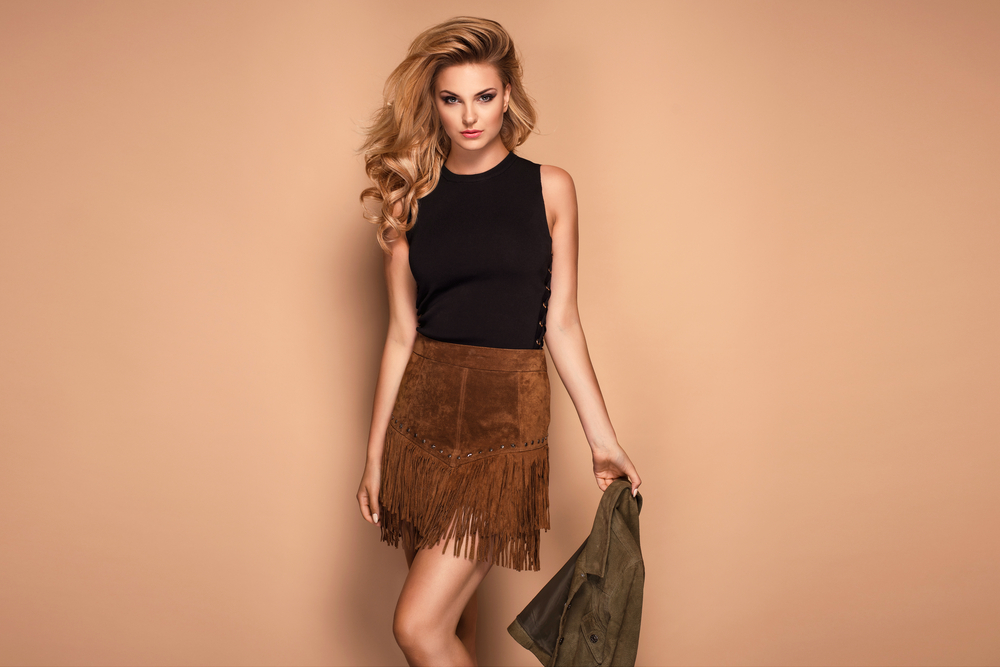
As one flips through the glossy pages of fashion magazines or scrolls through social media feeds, it's hard not to be captivated by the allure of models gracing the pages or screens. They exude an air of confidence, elegance, and magnetism that seems to be effortlessly captured in every shot. But what really goes on behind the scenes of a successful photoshoot? What are the secrets that make a model shine and leave a lasting impression? In this article, we delve into the art of modeling and uncover the keys to success in the fashion industry.
Mastering the Posing Techniques
One of the fundamental skills a model needs to develop is the art of posing. Posing is not merely about standing in front of the camera; it's about telling a story, conveying emotions, and creating a connection with the viewer. Professional models spend hours honing their craft, studying different poses, and understanding how their body reflects light and angles.
Cultivating Body Awareness
A successful model knows how to move their body with confidence and grace. They are not only aware of their posture and facial expressions but also of every subtle movement. They understand that even the smallest gesture can make a significant impact on the final image. Models regularly practice different movements and gestures to develop fluidity and control over their bodies.
Expressing Emotion
Fashion photography is not just about showcasing clothes; it's about evoking emotions. The ability to express a wide range of emotions is crucial for a model's success in the industry. Whether it's channeling sensuality, portraying strength, or conveying vulnerability, models need to be able to tap into their emotions and bring them to life in front of the camera.
Understanding the Fashion Vision
Models are not merely clothes hangers; they are essential collaborators in the creative process. They need to understand the vision behind a particular photoshoot and work together with the photographer, stylist, and creative team to bring that vision to fruition. This requires active communication, adaptability, and the ability to take direction and incorporate it into their performance.
Maintaining Physical and Mental Well-being
The fashion industry can often be demanding, physically and mentally. Models must prioritize their well-being to thrive in this competitive environment. This involves maintaining a healthy lifestyle, taking care of their skin, hair, and body, and nurturing their mental health. Regular exercise, a balanced diet, and sufficient rest are essential to ensure they are always at their best.
Building a Diverse Portfolio
Having a diverse portfolio is key to showcasing versatility and attracting the attention of top-notch clients. Models should collaborate with a variety of photographers, stylists, and makeup artists to create a collection of images that demonstrate their range and ability to adapt to different styles and concepts. A strong and diverse portfolio opens doors to new opportunities and expands a model's potential to book jobs.
Networking and Self-Promotion
Success in the modelling industry is not solely dependent on talent and looks; it also requires effective networking and self-promotion. Models need to actively engage with photographers, agencies, and industry professionals to build connections and gain visibility. Utilizing social media platforms, attending industry events, and participating in fashion weeks are all important aspects of establishing a strong presence in the fashion industry.
Frequently Asked Questions
Q: How do I get into the modeling industry?
A: Building a modeling career starts with finding a reputable agency that aligns with your goals. Submit your portfolio to agencies, attend castings, and network within the industry to increase your chances of getting signed.
Q: Is there an age limit for modeling?
A: While the fashion industry tends to focus on younger models, there are opportunities for models of all ages. Agencies and clients often seek models who represent various age demographics for specific campaigns or projects.
Q: What are the essential qualities of a successful model?
A: Besides having the right physical attributes, qualities such as professionalism, versatility, adaptability, and resilience are crucial for a model's success.
Q: Do I need professional training to become a model?
A: While professional training is not mandatory, it can significantly enhance a model's skills and increase their marketability. Look for reputable modeling schools, workshops, or seek guidance from experienced models and industry professionals.
Q: How can I handle rejection in the modeling industry?
A: Rejection is a common experience in the modeling industry. To handle it, it's important to maintain a positive mindset, seek constructive feedback, and view each setback as an opportunity to grow and improve.
In conclusion, modeling is far from being a simple task of posing in front of a camera. It requires a combination of skills, dedication, and an understanding of the fashion industry. By mastering posing techniques, cultivating body awareness, expressing emotions, understanding the vision, and prioritizing well-being, models can set themselves up for success. Alongside building a diverse portfolio, networking, and practicing effective self-promotion, aspiring models can pave their way to a rewarding and fulfilling career in the fashion industry.
Other useful resources
- https://en.wikipedia.org/wiki/Category:Models_by_modeling_agency
- https://www.planetmodelphoto.com/models/modeling/usa/charlotte/nc-north-carolina
- https://en.wikipedia.org/wiki/Category:Modeling_(profession)
- https://www.planetmodelphoto.com/models/modeling/usa/wilmington/nc-north-carolina